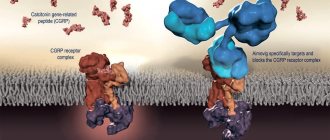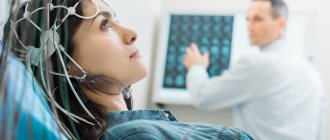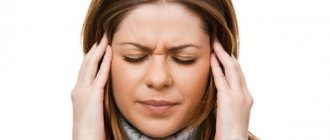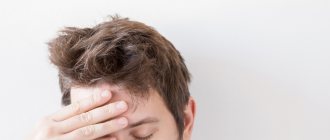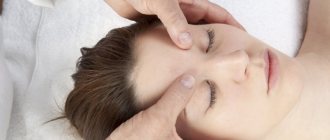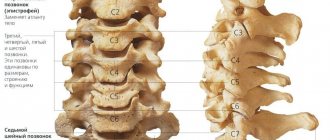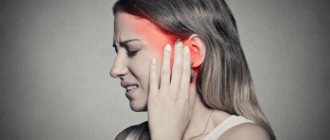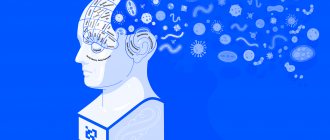Now the seasons are changing, and many people complain of headaches, which they associate with the change in weather.
According to a Eurohead study, 50% of patients suffering from headaches tend to blame the “heavenly office” for their problems.
In most cases, such “weather” pain is a migraine. The second most common type of headache is tension headache. How can you tell them apart?
Tension pain is of mild or moderate intensity, it is evenly distributed throughout the head and is similar to compression. For migraines, throbbing or pressing pain is typical. It usually covers half of the head and is felt in the forehead, temple, and around the eyes. A migraine attack is often accompanied by additional symptoms - nausea, increased sensitivity to bright lights (photophobia), or loud sounds (phonophobia), or smells (osmophobia). Vomiting and dizziness may also occur. During an attack, physical activity worsens the condition; it is better for the patient to be in a quiet, dark room. The attack lasts from 3–4 hours to 3 days (on average 20 hours).
My legs give me no rest. How does flat feet lead to headaches? More details
Is the weather to blame?
“Changes in weather conditions are one of the provoking factors of migraine, but not the only one (see infographic), explains a neurologist at the National Medical and Surgical Center. Pirogova Vera Blokhina . — According to statistics, 50% of people suffer from systematic weather-related headaches. But the specific provocateur is different for each patient: for some, the headache begins due to changes in atmospheric pressure, for others - from temperature changes, in others - due to heat and excess sunlight (solar migraine), in others - from cold weather (cold migraine), etc. Neurologists advise such patients to keep a headache diary, which will help identify individual factors that provoke and alleviate such pain.”
Click to enlarge
Primary headaches
| Name | Symptoms |
| Migraine | Throbbing pain in the head, most often occurring after sleep. The severity of the headache ranges from moderate to unbearable. The pain is felt on one side of the head: in the right or left temple, forehead, crown. Migraine lasts up to three days, often accompanied by nausea and vomiting. A person does not tolerate bright light and loud sounds. Migraines can be caused by stress, insomnia, or changes in weather. The tendency to migraine is inherited. |
| Tension headache (TTH) | A pressing headache covers the entire head or separately the back of the head, crown, forehead. Cephalgia can be severe. A tension headache attack can last up to 7 days. At the same time, my head hurts every day. TTH occurs due to emotional or physical stress. |
| Cluster headache | Unbearably strong shooting pain in the head. It is felt on one side, in the forehead and eye area. Cluster pain causes redness and swelling of the face and lacrimation on the pain side. Due to a severe headache, a person behaves restlessly. |
| Headache and facial pain due to trigeminal neuralgia | Very strong short-term stabbing pain in the head. The pain is felt in the crown, forehead, and can affect the face and teeth. The headache attack lasts several hours. In this case, spasm of the facial muscles may occur. |
How is the diagnosis made?
Headache is a subjective sensation that is not recorded by tests and studies. Therefore, the diagnosis is made based on the patient’s complaints, medical history, and additional examination (electroencephalogram of the brain, ultrasound of neck vessels, MRI and CT) may be required to exclude the so-called secondary headache - it occurs with brain tumors, hemorrhage, aneurysm, etc. d. Migraine is often confused with pain in such diseases, but they need to be distinguished - this is important for treatment.
From a sick head to a healthy one
Pain from which your head simply splits in half... Do you know this picture when it seems that you are ready to drink a whole mountain of painkillers just to let it go? Fortunately, pharmacies offer a whole arsenal of medications. But don’t rush to grab the pills. Try to first understand why you have a headache? The head of the Regional Center for Diagnostics and Treatment of Headaches OKDC, Candidate of Medical Sciences Elena Shestel will help you figure this out.
All “happy” heads hurt the same...
In healthy people, headaches can be caused by stress or simple overwork. The fact is that negative conditions such as anger, anxiety, fear lead to prolonged tension in the muscles of the face, shoulders and neck. Nerve endings are “pinched” in tense muscles, and the nerve impulses coming from them are transmitted to receptors located in the soft tissues of the head - a person feels pain. Staying in a sitting, bent position for a long time can also cause pain, since the back and neck “go numb” in this position, and this leads to vasoconstriction and a reduction in blood flow, which, in turn, causes a lack of oxygen in the tissues and the accumulation of metabolic products in them . At the same time, dilation of blood vessels (for example, due to excessive eye strain) leads to irritation of nerve endings, which also causes headaches.
According to WHO, 99% of people on earth experience a headache attack at least once in their lives. Most often, it goes away on its own: just drink hot tea, relax, take a bath, adding a few drops of essential oils to the water: lavender, lemon, peppermint... Fragrant foam and sea salt are welcome! Or stand in a hot shower to help relieve cramping headaches caused by muscle spasms in the back of the neck and head. You can take mustard foot baths - they reduce blood pressure in the brain. In addition, cold compresses help well, as they constrict the blood vessels in the painful area and reduce painful pulsation. A bag of ice cubes wrapped in a towel should be applied to the forehead, temples or back of the head for approximately 10–15 minutes. Listen to calm, pleasant music or watch an interesting comedy program. Laughter not only tones blood vessels, but also promotes the production of pleasure hormones, endorphins, which have an analgesic effect. You can massage your head with light stroking movements from the forehead to the back of the head.
But, if the pain does not go away for a long time, if it often recurs, then you need to deal with it in the doctor’s office.
The fact is that a headache can be a manifestation of such threatening diseases as a brain tumor, heart attack or stroke, cerebral hemorrhage, meningitis, encephalitis, trauma... In this case we are talking about secondary headaches - in the medical classification their number is close to three . But, fortunately, this situation occurs only in 2% of cases. Most often, pain is not associated with structural disorders of the brain and is benign in nature with a favorable prognosis. They are called primary. The most common among them are migraine, tension headache, and cluster headache.
Illness of responsible people
Almost a fifth of the world's population suffers from migraines. It has been noted that the disease, as a rule, occurs in people who are ambitious, responsible and conscientious, who tend to overload themselves with work. Migraines are often hereditary. It is noteworthy that the weaker sex is most susceptible to this serious but not fatal illness. The symptom of the disease is well known: with a migraine, only half of the head hurts. Severe throbbing pain during an attack can affect the orbital, parietal, temporal or occipital region of the head. Sometimes before an attack a person experiences a special visual aura: flickering spots, unclear outlines of objects, darkening in the eyes. Multi-day attacks that occur several times a month turn life into torture. Conventional analgesics, as a rule, are not effective; special anti-migraine vasoconstrictor drugs are required. They should be taken at the beginning of an attack. But only a doctor should prescribe a medicine, based on the individual characteristics of the patient and concomitant diseases.
Courageous on the outside, gentle on the inside
However, you should not think that headaches are a purely female privilege. For example, cluster headaches, the most painful of all, are unique to men. It manifests itself in characteristic painful periods with a duration of 15 - 180 minutes, repeated several times a day for up to 3 months. This is an extremely intense paroxysmal pain localized in the area of one eye, accompanied by lacrimation, nasal congestion and a pronounced feeling of anxiety and restlessness. The pain disappears suddenly and sometimes does not bother the person at all for several years. There is a widespread belief among doctors that cluster pain affects representatives of the “stronger” sex with an exceptionally masculine, but deceptive appearance. In fact, they are soft, fearful, indecisive.
Tired - take a rest
Everyone knows the headaches associated with overwork. Its cause is not only stress, but also a busy work schedule, personal problems, and weather changes. This is the most common type of headache, the so-called tension headache. It manifests itself in the form of episodes lasting from several minutes to several days, usually bilateral, squeezing or pressing, of moderate intensity. But often, in the absence of proper treatment, such a headache becomes chronic, is permanent and is poorly relieved by taking classical analgesics.
Don't rush to take pills
What to do if you have a headache? First and most importantly, do not rush to take medications. No matter how good, modern and expensive the drug is, any of them has side effects. This is especially true for homeopathic remedies and dietary supplements. In addition, self-administration of medications gives only short-term results, but does not affect the mechanisms of pain. As a result, the headache returns again and again, the amount of painkillers increases, which leads not only to the development of side effects of the drug itself, but also to the development of dependence on analgesics, which in itself can also provoke headaches. Only a doctor can select appropriate therapy with specific drugs, and in such cases medications must be taken under strict medical supervision.
Important
Very often, headaches are caused by certain provoking factors - triggers. They are different for everyone and can change in one person from attack to attack. Here are the most common ones:
- Nutrition. Basically, this is an irregular diet. In addition, some people are sensitive to certain types of foods (cheese, chocolate, coffee, citrus fruits). Alcohol, especially red wine, beer, champagne, and cocktails are common headache triggers.
- Dream. Lack of sleep or prolonged sleep are common causes of headaches. Try to get up on weekends no later than 2 hours from your usual awakening on weekdays.
- Physical exercise. Heavy physical work or intense exercise in the gym can trigger headaches, but at the same time, regular exercise and maintaining physical fitness are a good defense against this scourge. Dosed aerobic exercise and swimming are desirable.
- Environment: bright or flickering light, strong (sometimes even pleasant) odors, stuffy rooms, sudden changes in weather, long trips (especially with time zone changes).
- Psychological factors: negative emotions or, surprisingly, relaxation after a stressful situation.
- Hormonal factors in women: a certain phase of the menstrual cycle, pregnancy, menopause, taking or interrupting hormonal contraception.
If you have changed your lifestyle and you continue to have headaches and are forced to take more than 2 tablets of analgesics per month, you need to consult a doctor.
What is strictly forbidden:
- Drinking alcohol. It dilates the blood vessels and at first it actually becomes easier, but then the condition worsens.
- To drink coffee. If you have high blood pressure or are prone to atherosclerosis, even one cup of coffee can be harmful. However, for hypertensive patients, on the contrary, a couple of sips of coffee will be a salvation. For those who constantly take large doses of this drink, an extra dose will not help, but will only make it worse.
- Smoking. Nicotine causes a sharp spasm of blood vessels, which will make the pain even more intense.
Main:
If you have changed your lifestyle, but you still have headaches and you are forced to take analgesics more than 2 tablets per month, you need to urgently consult a neurologist. Residents of the Rostov region have a unique opportunity to get to the only Regional Center for Diagnostics and Treatment of Headaches in the south of Russia based on the OKDC. In order to undergo an in-depth examination that meets European standards and receive specialist advice, it is enough to have a compulsory medical insurance policy and a referral from a district hospital or clinic.
The staff of our headache center are members of the Russian Society for the Study of Headache (ROIGB).
share information
0
Social buttons for Joomla
What if it's cancer?
With frequent headaches, many people think about brain cancer. “Headache is one of the first signs of brain tumors, both benign and malignant,” says the chief physician of the Research Institute of Clinical and Experimental Radiology, National Medical Research Center of Oncology. Blokhina Ekaterina Kobyakova . - It can be caused by increased pressure in the cranial cavity and compression of adjacent tissues. The main difference between pain caused by a tumor is its combination with other symptoms (impaired balance and coordination of movements, visual disturbances, epileptic seizures, vomiting). CT and MRI of the brain help in making a diagnosis.”
Diagnosis of pain in the back of the head
If you suffer from constant or regular pain in the occipital region of the head, contact the CELT clinic. Our specialists will conduct the necessary research and find out the reason why you are experiencing pain. In order to become our patient, you do not need Moscow registration.
In addition to obtaining a history of the nature, timing and intensity of pain, diagnosis may include:
- examination by a doctor;
- blood pressure measurement and monitoring;
- ultrasonography;
- electroencephalography;
- magnetic resonance imaging;
- examination of the fundus by an ophthalmologist.
If there is a suspicion of a brain tumor, a consultation with a neurosurgeon will be required.
Migraine or stroke?
“Ischemic stroke cannot be confused with migraine pain,” explains neurologist Igor Matsokin . “But the symptoms of some forms of hemorrhagic stroke (bleeding in the brain) may resemble it. But there are fundamental differences. With migraine, the headache can usually be relieved or weakened with regular painkillers. And with a stroke, pain occurs suddenly and is necessarily accompanied by speech, vision, hearing, and paralysis. Plus, all these symptoms are steadily progressing.”
How to treat?
There are two types of medications used for migraines. Some relieve pain that has already arisen, while others prevent the development of attacks. The latter are prescribed to patients with frequent attacks. Most medications are over-the-counter. But they can only be taken as prescribed by a doctor. Uncontrolled use leads to a special headache, which is more difficult to treat than a regular migraine.
Mysteries of migraine. Why can’t this disease be cured forever? More details
